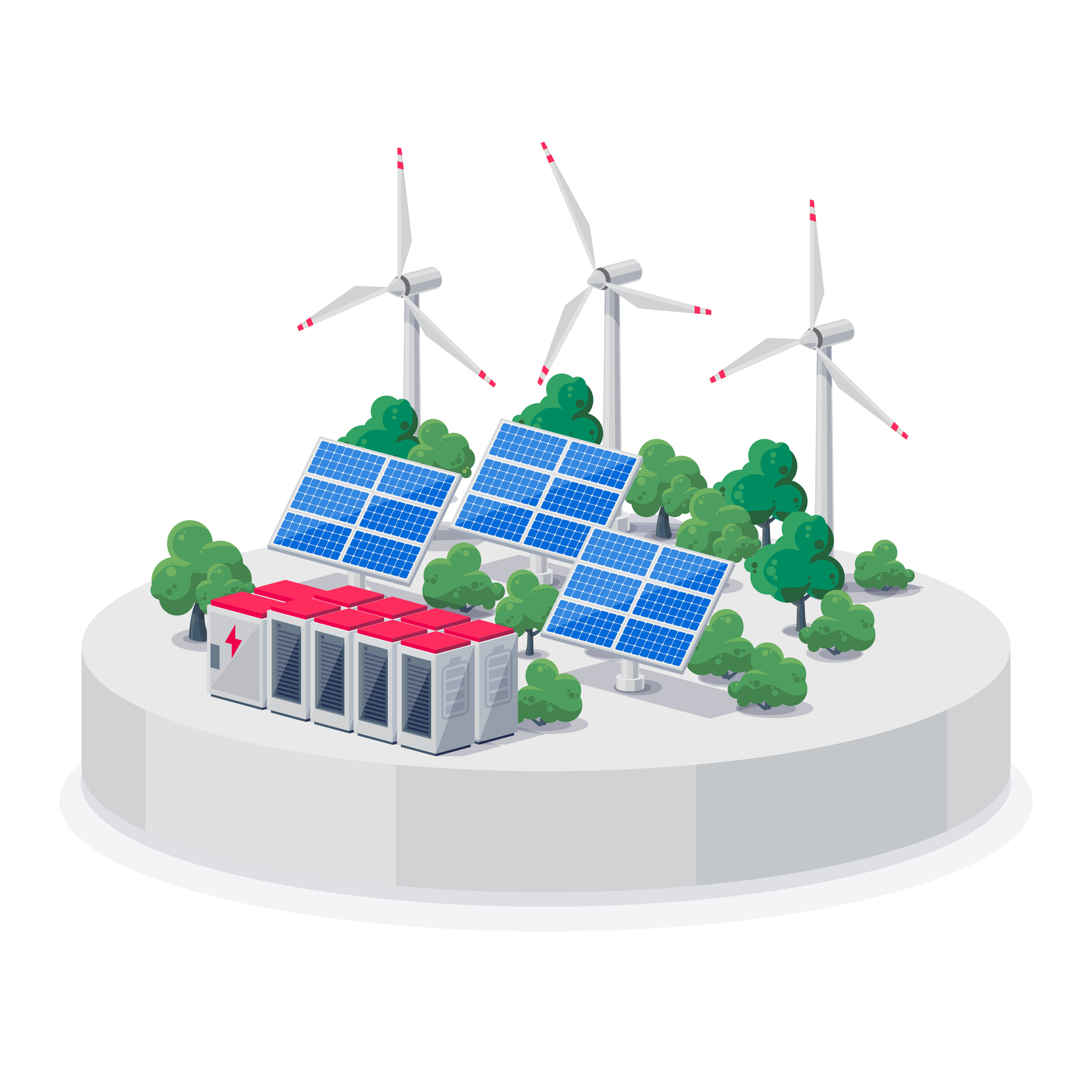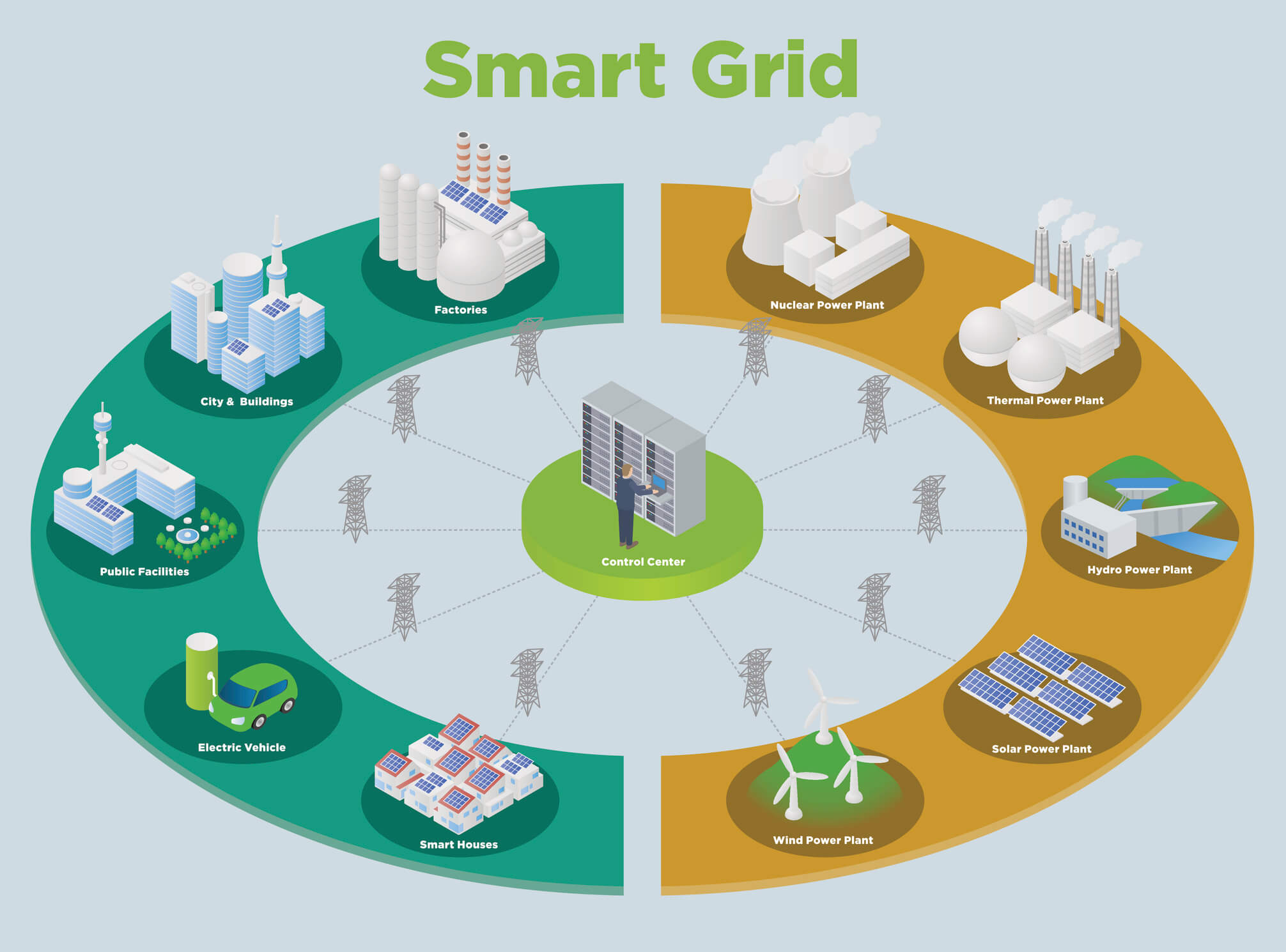Microgrids hold up against power outages because they are local entities. In rare cases, if a microgrid loses power, you can restore it faster because it treats a smaller area.
Microgrids: A Mega-Opportunity for Electric Utilities
The use of microgrids – small, self-contained energy delivery systems for neighborhoods or campuses that often include renewable sources – is advancing across the country.

What Is a Microgrid?
A microgrid is an entity that contains multiple power sources to service a local area. Often composed of many distributed energy sources, microgrids provide power to small regions. These systems can be independent of central grids but typically work with city power for a stronger connection.
College campuses, hospitals and large industrial centers use microgrids for protection and sustainability. When a tree falls on a power line near these areas, these locations still need to function. They use microgrids to prevent significant outages. Most places with this system employ it for added insurance against powerful storms and natural independence.
Microgrids maintain power regardless of the central grid they’re connected to. However, most types of microgrids have a cooperative relationship with city power that improves both systems. The smaller grid will use energy from the larger and conserve it to maximize cost and reliability.
Microgrid Usage
Using microgrids for campuses that need reliable energy provides freedom when a power threat occurs. These systems protect from cyberattacks and inclement weather by disconnecting from the central grid in an emergency.
Plus, users enjoy the renewable energy resources for campuses that want sustainable power. Microgrid systems can use solar panels, natural gas or wind turbines to create eco-friendly energy. Many microgrids also recycle their energy through combined heat and power or storage facilities.
Because they use intelligent systems, microgrids can save energy and money through specialized configuration. The grid’s “brain” will determine the best time to buy, conserve or charge its energy. Thus, you can improve the strength of your power supply without making the decisions your grid can make automatically.
Why Are Microgrids an Opportunity for Electric Utilities?
Microgrids and electric utilities can form an important relationship in their communities. Utilities are responsible for the energy in their area, so their effectiveness is already dependent on the grid system they use. Electric utilities can have a secure and renewable energy resource with the help of a microgrid.
Here are several benefits of microgrids when used to service electric utilities:
Once its brain is configured to make intelligent decisions, a microgrid will perform efficiently and save money in the process. For example, it can determine the best time to purchase power from the central grid based on when it is cheapest.
Microgrids combine several types of energy resources to optimize every option. You can also program your system to increase sustainability by storing and recycling its power.
If your electric campus is far from the central grid, a percentage of the energy is lost in transmission. Microgrids are local solutions that maximize every bit of energy produced.
Electric utilities need resilient, reliable systems to keep them running. A microgrid is a self-sufficient entity that can solve electrical issues and provide clean energy to its community.
Are microgrids a threat to utilities?
For the traditional electric utility business model, microgrids could be perceived as difficult to manage and integrate – even a source of competition. Rather than seeing microgrids as a threat, utilities should approach them as an opportunity. Maximizing that opportunity may require advocating for and winning changes in regulations, rate tariffs, and service-franchise territories. But as we describe below, we see many ways microgrids can be both moneymakers and cost-savers for utilities.
TRC’s Advanced Energy team has developed multiple projects for private-sector, state, and federal clients, including partnerships with traditional utilities. We bring together under one roof all the expertise clients need to design, permit, and oversee construction of microgrids, including experts in power-delivery engineering; solar photovoltaics, wind, and other renewables; CHP; energy storage; energy efficiency and demand response; and experts in environmental planning and permitting and information technology automation and communication services.
Utility Ownership of Microgrids
There are two big reasons we think microgrids can work for, and not against, utilities. First, to be economically feasible, the microgrid’s generation must provide savings over current retail tariffs. But we know that reliability and resiliency comes at a cost. Those costs must be offset by the improved power quality and reduction in customer losses caused by unplanned outages. The efficiencies brought to a microgrid through incorporation of energy storage, renewable generation sources and combined heat and power systems provide the needed economic incentives for construction of the microgrid.
Many customers will be just as eager to turn over designing and running their microgrid to a large, capable utility as they are to turning over their payroll, office information technology, and telecommunications services to large, capable providers. Most customers, even large industrial ones do not want to be in the power business. They simply want to lower their cost for energy while improving reliability. Utility ownership of microgrids is a way to accomplish these goals in a way that incorporates new technology while maintaining the traditional utility model as a distributor of energy to the customer.
Microgrids Can Reduce Costs of Maintenance
Secondly, microgrids are also proving to be a way utilities can reduce their cost of maintaining reliable service. For example, San Diego Gas & Electric struggled for years with maintaining service in lightning strikes and desert flash floods to 2,800 customers Borrego Springs, Calif., which was served by a single radial transmission line through the desert. Installing a microgrid in 2009-10 that combined diesel generators, rooftop solar, and utility scale battery storage, has proven a cost-effective way to keep power running, especially for emergency cooling shelters.
As we described on this earlier blog, we are also working with a team that includes PSEG Long Island on the engineering and design of a microgrid for Huntington, N.Y. As microgrid technology, reliability, and costs improve, utilities are seeing that microgrids can be a cost-effective alternative to transmission upgrades or redundancy. That project is seamlessly meshed with a portion of the existing utility distribution system so as to augment and relieve demand on peak demand days, and to operate autonomously through a widespread outage.
Utility business models are already evolving, as they have to. A process that started with customers installing rooftop PV is accelerating with microgrids. Utilities and regulators are working through how to price the clear value those customers place on keeping a connection to the utility grid, protecting the viability of the utility model.
Beyond that, the opportunity for deploying projects to serve customers and to rationalize network reliability-upgrade costs are why we are confident that, for US electric utilities, microgrids are a mega-opportunity.
Consult TRC For More Energy Possibilities
At TRC, we understand the importance of reliable power for successful businesses and communities. We are an industry-leading energy and infrastructure consulting, engineering and management firm. We focus on effective solutions to fuel the world.
We provide expert guidance for your electric utility, so you can serve your customers and communities best. For more than five decades, we have consulted with some of the country’s top energy companies and given practical guidance on opportunities like microgrids.
For more information about microgrid solutions, you can contact us online or call (860) 385-6016.
Updated on November 11, 2021




